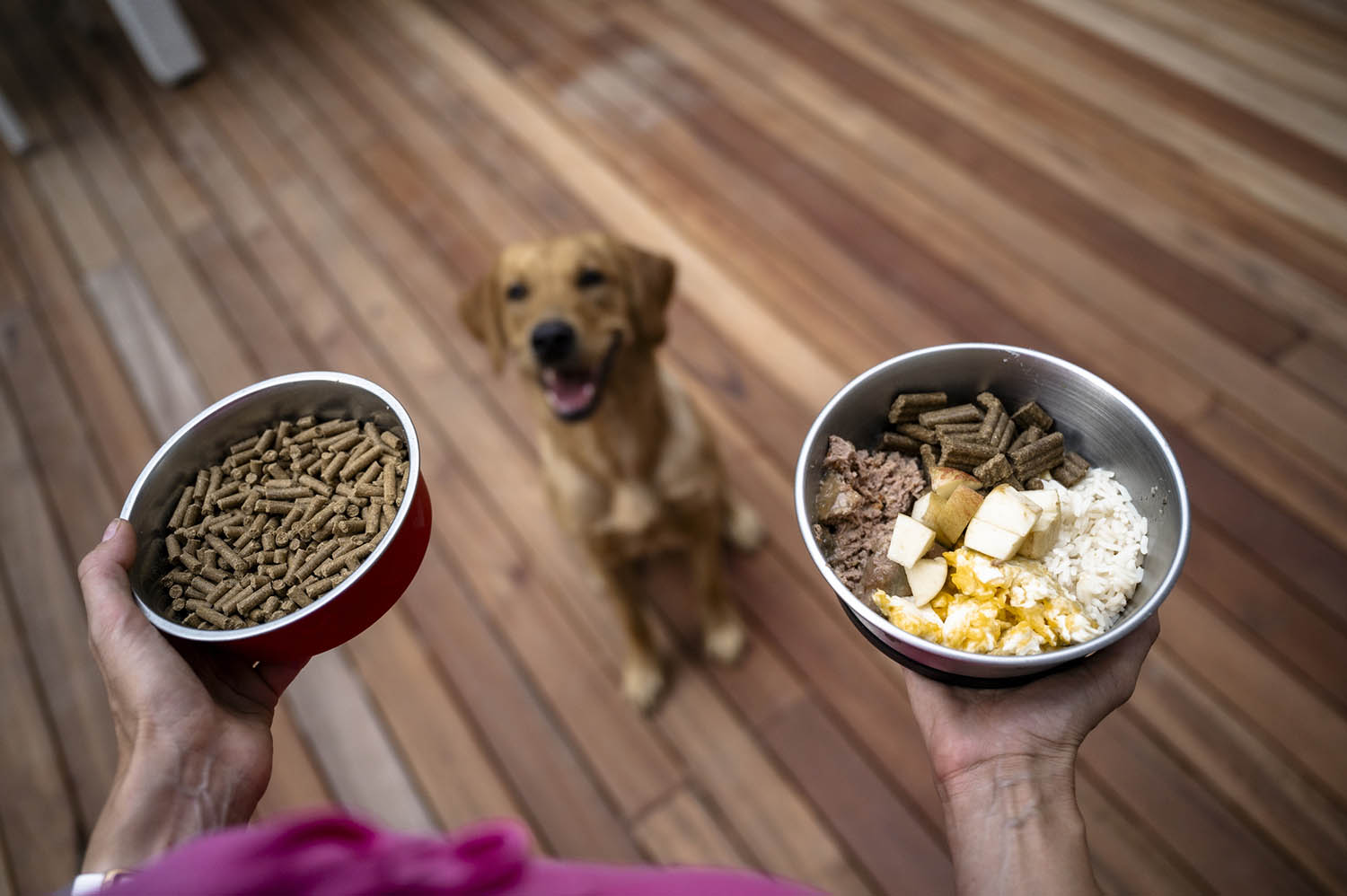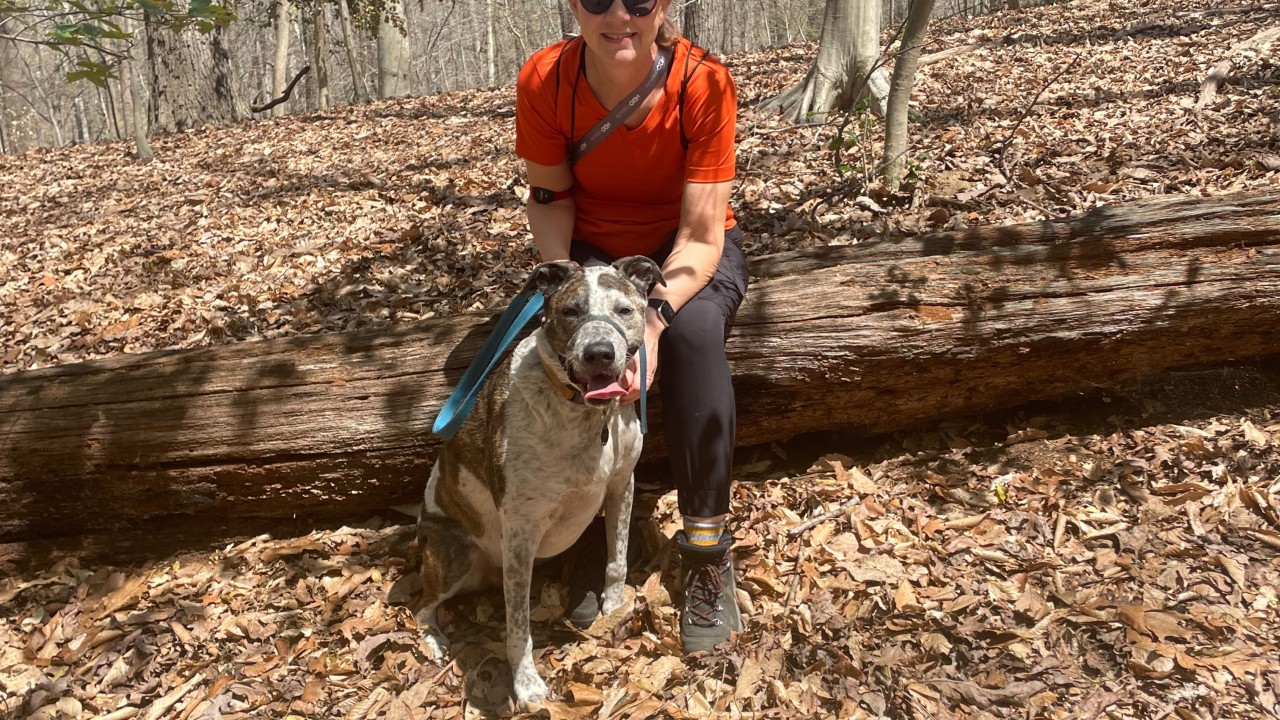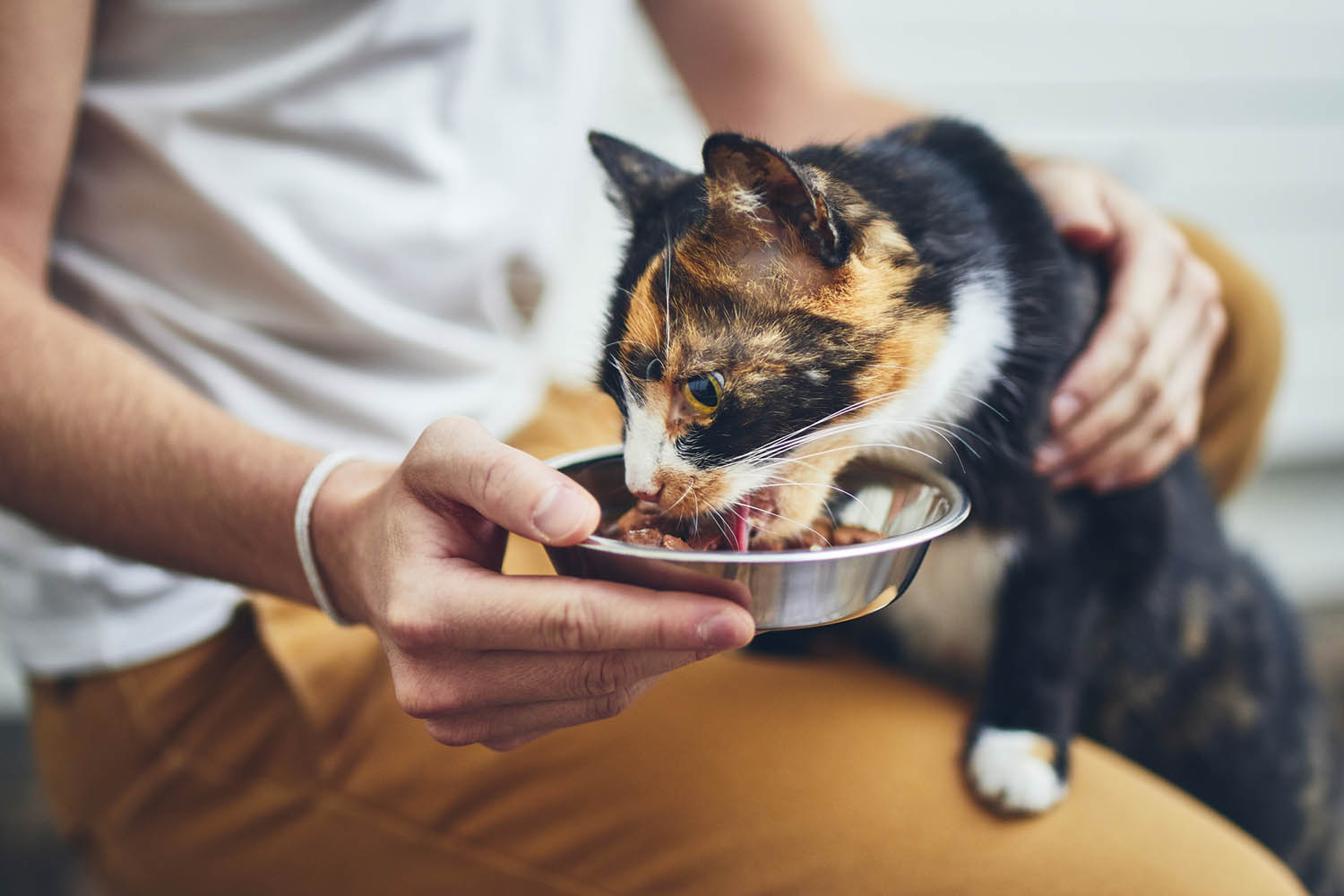Pet lovers have an array of options when selecting the best food for their dog or cat. PFI explains some of these choices.
Skip to a section:
By-products
Ingredients produced during the processing of food for human consumption, often referred to as “by-products” or “co-products,” are excellent sources of nutrition for cats and dogs. While by-products, particularly animal by-products—the highly nutritious parts of chickens, cows, pigs or fish, for example, that are consumed first by animals in the wild—may not be preferred by Americans, they often are considered delicacies by others around the world.
Moreover, the use of these ingredients can help support common sustainability goals by preventing food loss, helping prevent the waste of nutritious and safe material, and helping to ensure that pet food ingredients do not compete with human food ingredients or result in additional land being placed under agricultural production[1].
CBD
Cannabis-containing and cannabis-derived products, like CBD oil, have become the topic of conversation for both humans and pets. However, the U.S. Food and Drug Administration (FDA) has not approved these products for inclusion in either human food or pet food and prohibits the addition of CBD to prepared foods. While FDA determines a new ruling on ingredients, such as CBD, research is underway among regulatory bodies, academia and pet food makers to confirm the benefits and safety of CBD for pets.
Colors, Flavors, and Preservatives
Colors, flavors and preservatives, whether through a natural or man-made source, may be included in a pet food recipe for a variety of purposes. These ingredients are closely regulated at the federal and state level for safety and will be listed on the pet food label. Click here for more information about how ingredients are reviewed for safety through either the Food Additive Petition or Generally Recognized as Safe (GRAS) processes.
Colors
Pet lovers may expect or prefer a certain color in their dog or cat’s food. Small amounts of safe food coloring, from both artificial and natural sources, may be added to a recipe for this reason. These ingredients have not been known to be associated with any health issues in pets.
Flavors
Additional flavors may be added to a finished pet food product to ensure tastiness for pets. Common ways to add flavor is by including a nutrient-dense rendered meal that pets find delicious or adding highly-desirable animal fats or oils to the finished food. In reviewing the ingredient labels in the pet food section of a store, it’s very apparent that artificial flavors are not commonly used in pet food. As with colors, these additives are carefully regulated and have been recognized as safe.
Preservatives
Preservatives play an important role in helping to keep pet food shelf-stable and prevent ingredients from spoiling. Preservatives can come from both artificial or natural sources (such as vitamins C and E in the form of ascorbic acid and tocopherols) and must be approved for use and demonstrated to be safe.
Dry, Canned and Wet, and Semi-Moist
Dry
Dry pet food is one of many healthy, nutritious pet food options available. Unlike wet pet food, dry and semi-moist food can be cooked and shaped during a process known as extrusion, which is also used for many human foods such as cereal and pasta. The “How Pet Food is Made” webpage explains extrusion in further detail, including how the ingredients are mixed and cooked at high temperatures before being pushed through a die plate that cuts the mixture to the desired shape and size. When making kibble, the food is then moved to a dryer to remove the remaining moisture.
Dry pet food typically has a 10 to 12 percent moisture content, while wet pet food contains 75 to 78 percent moisture.
Canned and Wet
Wet food is not extruded, but rather poured into cans which are then vacuum sealed and sterilized in a heat and steam chamber (a retort) prior to labeling. The primary difference between dry and wet pet food is the moisture content. Wet food contains between 70 and 80 percent moisture.
Semi-Moist
Semi-moist pet food is extruded at a lower temperature and pressure, and ultimately cooled instead of dried, to maintain a higher level of moisture. Semi-moist per food contains 15 to 30 percent moisture.
Homemade Pet Food
When considering homemade pet food for a dog or cat, it is important for pet lovers to consult with a veterinary nutritionist regarding the nutritional adequacy of a recipe.
A 2013 study conducted by a team of researchers at the University of California, Davis, School of Veterinary Medicine found that a vast majority of homemade recipes are lacking in nutrition. Researchers analyzed 200 different recipes for home-prepared dog foods, using recipes from different websites, veterinary textbooks and pet care books. The results showed that 95 percent of the recipes were deficient in at least one essential nutrient and 84 percent were lacking in multiple required nutrients.
Symptoms of an inadequate diet can impact a pet’s health fairly quickly, particularly with regards to diets deficient in water-soluble vitamins, such as certain B vitamins, which are not stored in the body. But if the deficient vitamin is fat-soluble, such as vitamin A or vitamin D, your pet’s health problems may not show for weeks or even months. Depending on the stage of life of the animal, the consequences of the nutrient deficiency may be more severe, especially for growing puppies and pregnant dogs.
Health problems that could result from the nutrient deficiencies that were most commonly found among the recipes for homemade diets assessed in the study include skin problems (zinc), bone and joint problems (calcium), and weight loss and fat accumulation in the liver (choline). Some of the homemade dog foods had so little of certain nutrients that they did not provide even half of the U.S. National Academy of Sciences National Research Council’s recommended daily intake. With regards to these nutrients, ninety-five percent provided less than half of the needed vitamin D, 55 percent provided less than half the needed zinc, 43.4 percent provided less than half the needed choline, and 39.2 percent provided less than half the needed vitamin E.
Limited Ingredient Pet Food
There is no regulatory definition for “limited ingredient” pet food and its application in dog and cat food can vary. Some common applications in today’s marketplace include pet food recipes that offer a single nutrient source (e.g., turkey as the sole protein source), or utilize different ingredients as nutrient sources (e.g., exchanging the type of grain used as a carbohydrate source). If a pet lover suspects his or her dog or cat may have food allergy or sensitivity, it is important to visit a veterinarian who can help diagnose the possible cause.
Natural
Natural is defined by the Association of American Feed Control Officials (AAFCO) “a feed or feed ingredient derived solely from plant, animal or mined sources, but not having been produced by or subject to a chemically synthetic process and not containing any additives or processing aids that are chemically synthetic except in amounts as might occur in good manufacturing practices.” AAFCO also provides a set of guidelines for using the term on pet food labels, and in the majority of states that have adopted AAFCO’s Model Bill and Model Regulations, pet food makers must comply with this definition to use the term on a label.
Organic
Pet food and treat makers develop organic products under the same rules established by the U.S. Department of Agriculture (USDA) that human food manufacturers follow. Under USDA’s National Organic Program (NOP), the agency develops regulations and guidance on organic standards and manages the National List of Allowed and Prohibited Substances. These are based on recommendations of the National Organic Standards Board (NOSB), which is made up of members of the organic food community.
Raw Pet Food
If considering a raw diet for their dog or cat, PFI encourages pet lovers to review the available data on raw diet safety and nutrition. Raw pet food is defined as meat, bones, organs and/or eggs that have not been cooked or treated. Treatment options can include the freeze-drying process and High-Pressure Processing (HPP).
During a two-year study conducted by the U.S. Food and Drug Administration (FDA) Center for Veterinary Medicine (CVM), the agency screened over 1,000 samples of pet food for food-borne bacteria. The study found that raw pet food is significantly more likely to contain Salmonella and Listeria than any other form of pet food. Humans may be infected by these bacteria through a number of outlets, including:
- Handling the raw pet food;
- A pet licking a human’s face;
- A pet’s feces. Pets that eat contaminated raw diets have been shown to shed pathologic organisms in their waste, which mean these bacteria are more likely to be present in areas around your house or backyard.
FDA advises households concerned about the possible infection of these food-borne diseases to not feed raw diets.
There is currently no peer-reviewed evidence to suggest that raw pet food offers any nutritional benefit in comparison to other forms of pet food. The National Academy of Sciences has identified more than 40 nutrients that are essential for dogs and cats, and a diet consisting solely of raw pet food may not provide the total required nutrition. If a pet lover decides to feed their pet a raw diet, look for food that is labeled as complete and balanced. PFI recommends consulting with your pet’s veterinarian before selecting a raw pet food diet.
Vegetarian and Vegan Pet Food
Pets are a part of the family and while providing single source of nutrition for many of America’s pets, PFI members are committed to supporting the health of all cats and dogs. Shoppers have an array of options when selecting food for their pet, such as wet, fresh or dry, that provides the complete and balanced nutrition and the many essential nutrients for healthy dogs and cats at their specific life stage. It is possible for vegetarian or vegan dog food recipes to provide complete and balanced nutrition for healthy adult dogs (often termed “adult maintenance”) without the use of animal-derived ingredients.
However, some dogs and cats have unique nutritional needs based on their different life stages, such as gestating and lactating adults or growing puppies and kittens. In addition, some animals may be undernourished, malnourished or have a nutrition-related disease or illness. These populations require pet food formulated for their conditions. A recipe without animal-derived ingredients may not provide sufficient levels of critical nutrients required to support the pet’s health. Shoppers can look to the Nutritional Adequacy Statement and appropriate life stage before choosing the best food for their pet and family’s lifestyle, and work with their veterinarian to ensure he or she remains healthy and receives the proper nutrition.
As obligate carnivores, cats need the amino acids, vitamins and long-chain fatty acids found in animal-derived ingredients, such as muscle, organ meat and fat, to survive. A complete and balanced vegan cat food recipe will be supplemented with synthetically-produced essential nutrients.
[1] https://d10k7k7mywg42z.cloudfront.net/assets/53e623d1f002ff3e7c00027c/infographic_brochure_web.pdf
Weight Management Pet Food
A veterinarian may recommend that a pet switch temporarily to a weight-loss or weight management pet food to help achieve a healthier, more comfortable weight if an issue has been identified.
Weight management pet foods include specific ingredient and nutrient variations to help pets, such as increased fiber and protein to help animals feel fuller, reduce begging, and maintain muscle, while reducing caloric intake. These pet food recipes can help reduce the number of calories pets consume but still ensure they receive the appropriate amounts of essential nutrients.
In addition, some pet food labels will feature that the product is lower in calories or fat. The Association of American Feed Control Officials’ (AAFCO) label guidelines include specific language to help regulate claims for weight-loss or weight management pet foods, such as “light,” “low-calorie,” or “reduced fat.”



